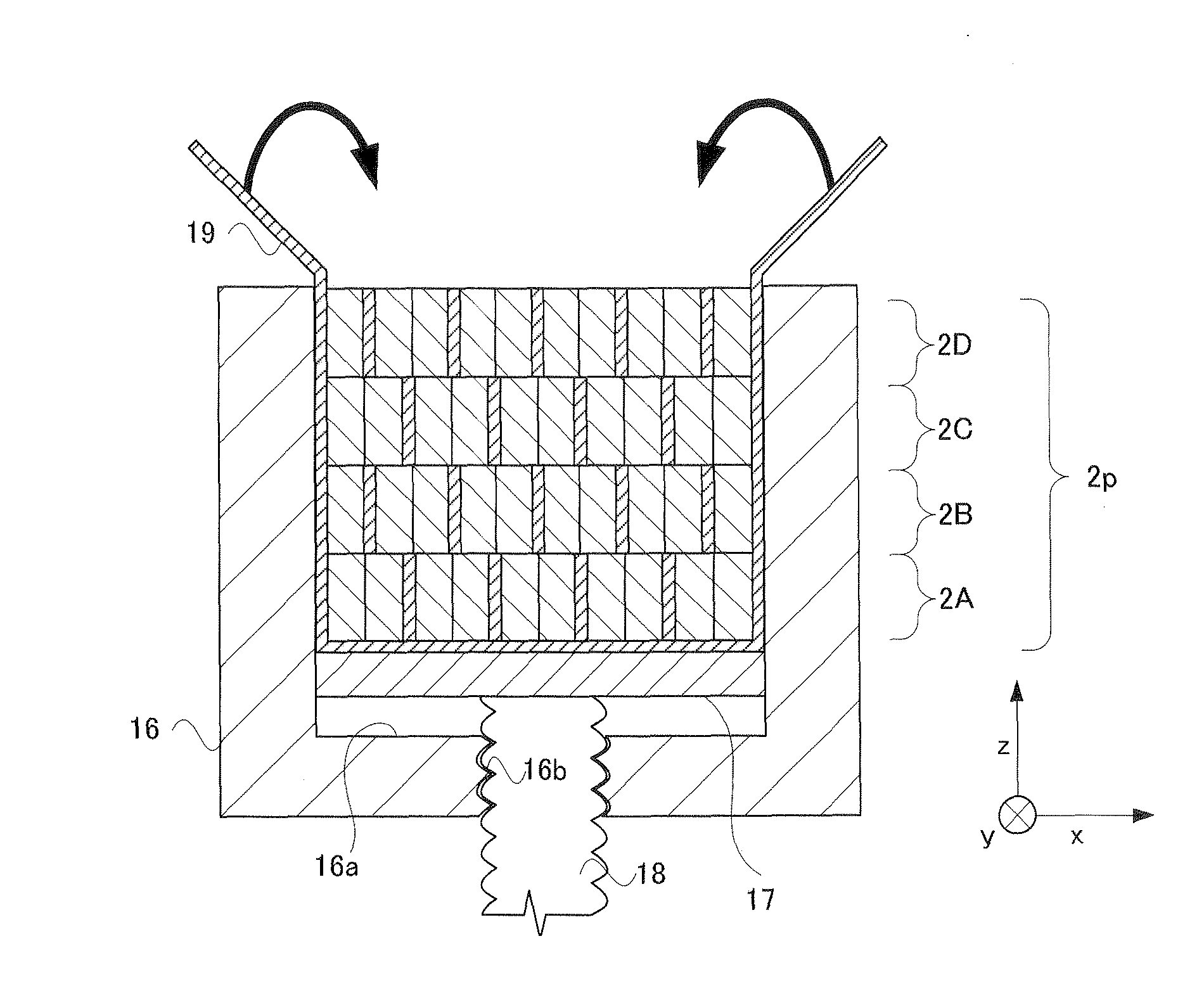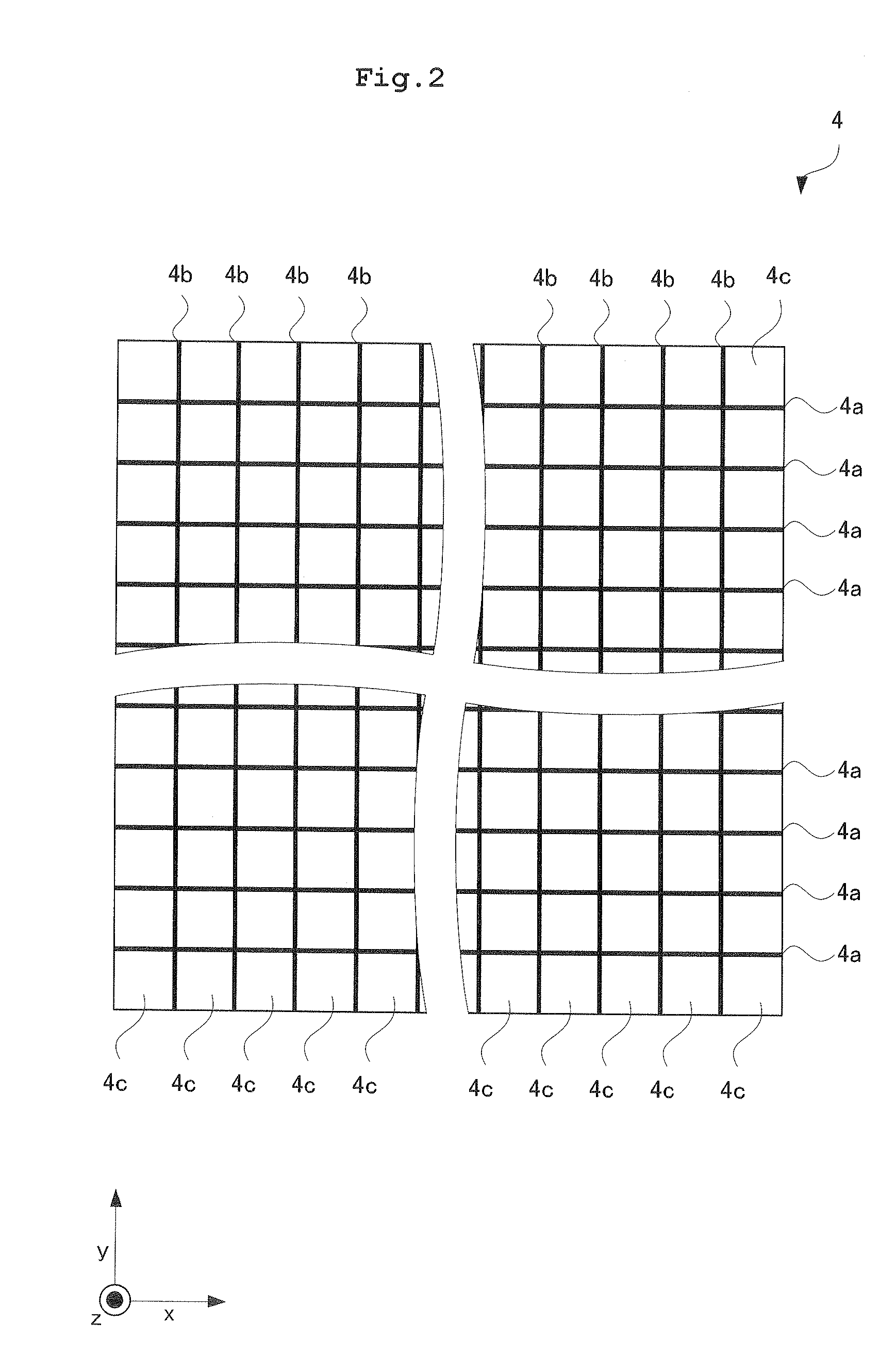Method of manufacturing radiation detector
a radiation detector and manufacturing method technology, applied in the direction of instruments, x/gamma/cosmic radiation measurement, synthetic resin layered products, etc., can solve the problem of manufacturing the conventional radiation detector and achieve the effect of accurate joining
- Summary
- Abstract
- Description
- Claims
- Application Information
AI Technical Summary
Benefits of technology
Problems solved by technology
Method used
Image
Examples
embodiment 1
[0065]Prior to description of a method of manufacturing a radiation detector according to Embodiment 1, a configuration is to be described of a radiation detector 1 according to Embodiment 1. FIG. 1 is a perspective view of the radiation detector according to Embodiment 1. As shown in FIG. 1, the radiation detector 1 according to Embodiment 1 includes a scintillator 2 that is formed of scintillation counter crystal layers each laminated in order of a scintillation counter crystal layer 2D, a scintillation counter crystal layer 2C, a scintillation counter crystal layer 2B, and a scintillation counter crystal layer 2A, in turn, in a z-direction, a photomultiplier tube (hereinafter referred to as a light detector) 3 having a function of position discrimination that is provided on an undersurface of the scintillator 2 for detecting fluorescence emitted from the scintillator 2 for receiving fluorescence, and a light guide 4 arranged between the scintillator 2 and the light detector 3. Co...
embodiment 2
[0109]Next, description will be given of a configuration in Embodiment 2. Embodiment 2 differs from Embodiment 1 in manufacturing in advance of the scintillator 2. FIG. 22 is a flow chart showing a method of manufacturing a radiation detector according to Embodiment 2. The configuration of Embodiment 2 includes the step of manufacturing the scintillator. The same steps proceed as the step S5 of manufacturing the temporary assembly and the step S6 of pouring the second hardening resin in Embodiment 1 upon manufacturing of this scintillator. Thus, the explanation thereof is to be omitted. In Embodiment 2, at the time the temporary assembly 2p is placed in the receptacle for joint 20, the optical adhesive 21 (the second hardening resin) hardens, and the scintillator 2 having the scintillation counter crystals 11 joined to one another is removed from the receptacle for joint 20. This unique step in Embodiment 2 is referred to as the step T1 of joining the scintillation counter crystals....
PUM
| Property | Measurement | Unit |
|---|---|---|
| thickness | aaaaa | aaaaa |
| height | aaaaa | aaaaa |
| width | aaaaa | aaaaa |
Abstract
Description
Claims
Application Information
 Login to View More
Login to View More - R&D
- Intellectual Property
- Life Sciences
- Materials
- Tech Scout
- Unparalleled Data Quality
- Higher Quality Content
- 60% Fewer Hallucinations
Browse by: Latest US Patents, China's latest patents, Technical Efficacy Thesaurus, Application Domain, Technology Topic, Popular Technical Reports.
© 2025 PatSnap. All rights reserved.Legal|Privacy policy|Modern Slavery Act Transparency Statement|Sitemap|About US| Contact US: help@patsnap.com



